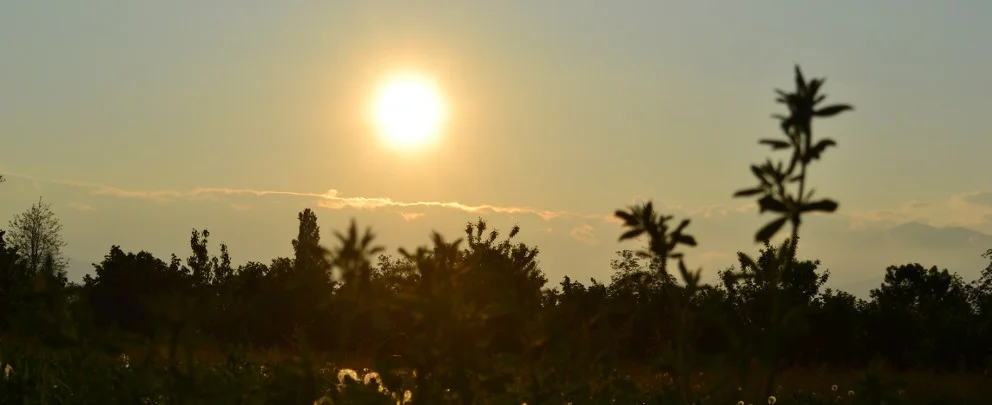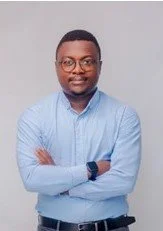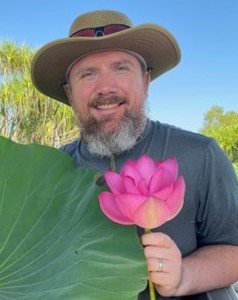BOARD chair, OLGA KILDISHEVA
Chair Elect, Stephanie Frischie
SECRETARY, Felicia Froton
TREASURER, NANCY SHAW
DIRECTOR AT LARGE,
Victor Otieno
At-Large Director, Sarah Barga
At-Large Director,
Benson Tilya
At-Large Director,
Gabriele Vieira
At-Large Director,
Francis Kilkenny
PAST Chair (2022-2024), Simone pedrini
I’m a restoration ecologist, passionate about seed-based restoration, in the broadest sense, from understanding species biology to enable their establishment to developing market drivers that improve native seed supply and use in restoration. Currently, I serve as a Regional Manager for the Pacific Northwest at Land Life Company. Prior to this, I led The Nature Conservancy’s Sagebrush Sea Restoration Strategy where I coordinated teams working across 6 western US states, building partnerships, and guiding R&D of seed technologies to improve the restoration of the sagebrush biome. I hold a Ph.D. from the University of Western Australia where I evaluated novel methods to enhance seed-based restoration of native plant communities in the western U.S. and Australia. I also earned an M.Sc. from the University of Idaho and a B.S. from Purdue University, both focused on restoration and reforestation efforts across the US and internationally. Olga is thrilled to rejoin the board and contribute to building a global community of practice where scientists and managers can come together to explore challenges and develop solutions to improve restoration outcomes.
Connect on LinkedIn
Follow on ResearchGate
I work across conservation agronomy; plant ecology; ecological restoration; and native seed production, use, policy, research, and quality - all to improve the supply and growth of important plant species for restoration of insect habitat. In my current role with the Xerces Society for Invertebrate Conservation, I provide technical expertise on native plant materials, native plants, and plant-insect interactions. Additionally, I lead the Bee Better Certified – Electric: third-party verified pollinator habitat certification for electric utilities; and Soil Life: training materials about soil invertebrate ecology and soil health. My experience in seed-based restoration ranges from the prairies of the central US and Canada, the scrub forests of Bolivia and olive agroecosystems in southern Spain. I am a founding member of the International Network for Seed-based Restoration and run Native Interest LLC from my homebase in central Indiana, USA.
I earned a PhD from Pavia University (Italy) for research on commercial seed production of Spanish native plants as cover crops in olive orchards at Semillas Silvestres, S.L. through the NASSTEC (NAtive Seed Science, Technology and Conservation) project. My MS is from Northwestern University/Chicago Botanic Garden’s Conservation Land Management Program, and I hold a BS in international agronomy from Purdue University.
I aim to serve the seed-based restoration community by expanding and deepening our network and resources, especially to include people and perspectives with Traditional Ecological Knowledge. We are approaching the midpoint of the UN Decade on Ecosystem Restoration and I see an important role for INSR to support progress toward local, regional, and global biodiversity targets. Seeds are plants too and are a very key part of restoring vibrant communities.
I’m Felicia Froton, and I am a small business owner of Radicle Seed Solutions (RSS) based in Western Washington. Prior to starting my business, I worked with a private company scaling conifer seed supply across the Western US, with collections spanning 6 states, yielding over 20,000lbs of seed over 4 seasons. I started RSS to continue scaling the tree seed supply as well as integrate other species that may be feasible in the logistical and geographic parallels of operations. Being in the business of trees, I may never sit in the shade of, my work aims to be progressive in response to our changing climate, as well as a proponent for fair labor compensation of the necessary workforce required to scale.
I am a research botanist (emeritus) with the USDA Forest Service, Rocky Mountain Research Station, with 35 years of experience in the restoration of riparian and terrestrial disturbances in semi-arid lands of the western United States. Prior to retirement, I led the Great Basin Native Plant Project, an interdisciplinary program to develop native plant materials, seed production practices, and restoration technology for this region. The project involved collaboration with federal and state agencies, universities, seed regulatory organizations, and the private sector native seed industry. I am currently contributing to efforts that inform and strengthen native seed conservation and use at levels from local to international. Through the INSR we have a valuable tool for sharing information on the effective and efficient use of native seeds in and beyond the UN Decade on Ecosystem Restoration.
I’m the Germplasm Resource Manager at the Centre for Ecosystem Restoration in Limuru, Kenya, with 14+ years of experience in plant genetic resources conservation and sustainable use. My current projects include ‘Native Seed Production and Distribution through Empowering Community Seed Collector Networks - Terraformation Projects ’ and ‘Conservation of Kenya’s Central highlands threatened tree species through community participation and integration into planting programmes-Franklinia Foundation’. Previously, I worked as a Technical Manager at Agropen Seed Company Limited, a Restoration Ecology Consultant at African Forest, a Seed Consultant at the World Agroforestry Centre-ICRAF, and a project officer at the Kenya Forestry Research Institute. My professional interest focuses on seed biology, technology, and trade interacting with practitioners, educators, researchers, and policy makers. I hold a BSc. and MSc. both from the University of Nairobi and currently a PhD student at JKUAT. I am a member of the International Society for Seed Science, the Botanical Society of America, the British Ecological Society, the IUCN SSC Seed Conservation Specialist Group, and Nature Kenya.
I am a Research Botanist with the USDA Forest Service Rocky Mountain Research Station in Cedar City, UT. In this role, I mainly conduct applied scientific research that is relevant to restoration in arid landscapes. My past research has examined how plants respond to environmental variation, which included seed germination work, seed bank studies, and species distribution modeling for native dryland species. My current work includes a large-scale forb common garden study for native plants to provide seed sourcing guidance for restoration across the Great Basin. With resources from the common garden study, I am performing complementary research identifying population-level variation in dormancy breaking cues and their relationship to source climate. I am also involved in research examining seed-based restoration of understory species in thinned areas of core pinyon-juniper woodland. More recently, I am partnering with the Paiute Indian Tribe of Utah and the Grand Staircase Escalante Partners to establish a tribal native plant nursery on Paiute land in Cedar City, UT; this facility will provide local, native plant materials for use in restoration, as well as the opportunity to study the native plant materials development process and ways to reduce the potential effects of propagation on restoration outcomes. I have been an INSR member for many years and am excited to be part of the board and to more formally support the needs of this dynamic group of people whose focus is my passion.
I am a conservation professional with expertise in native seed propagation, forest restoration, and community engagement. I have led restoration projects in coastal Tanzania, managing seedbanks, nurseries, and large-scale reforestation initiatives. I have collaborated with networks such as the East Africa Seed Network for Restoration (EASNR) and international partners, including Terraformation, to strengthen seed-based restoration practices. I established a community seedbank in Gongo Village, producing over 300,000 seedlings annually and restoring 65 hectares of degraded forest. My work combines technical seed expertise, ecological restoration, and community engagement, ensuring sustainable and inclusive restoration practices that can be scaled regionally and shared globally. I have shared my experiences through forums like TEDx and DWeb, highlighting practical approaches to conservation. My skills include project management, ecological restoration, and fostering collaborations that link local knowledge with global restoration efforts.
I hold a degree in Forest Engineering and a specialization in Project Management and Data Analysis. My work has been dedicated to understanding and improving the quality of native seeds for restoration projects in the Atlantic Forest and Cerrado. I have experience in seed quality evaluation, protocol development, and testing, and have completed several courses on native forest seeds. To make this knowledge more accessible, I even created a board game illustrating the journey of seeds from collection to transport. I also have experience in communication, management, and social media, producing content for Brazil’s Native Seed Committee, and previously worked in a marketing agency. Additionally, I have helped organize restoration events and contributed to public policy initiatives.
Dr. Francis Kilkenny is a research biologist with the USDA Forest Service’s Rocky Mountain Research Station and technical lead of the Great Basin Native Plant Project (GBNPP), a long-running partnership between the USDI Bureau of Land Management and Forest Service. With his GBNPP leadership, Francis oversees efforts to develop genetically appropriate native plant materials for the restoration of Great Basin drylands, including research on seed collection, propagation methods, and restoration strategies. Francis directly leads several large research projects, including a climate-smart “common garden” array assessing adaptive variation in native grasses and forbs, helping land managers source climate-resilient seeds; and the Seeding Evaluation and Experimental Design Strategies (SEEDS) project, embedding large-scale experiments into agency-led restorations, increasing learning rates and supporting true adaptive management. His work expands the availability and scientific grounding of native seed resources, improving prospects for restoration of dryland ecosystems vulnerable to wildfire, invasive species, and climate change.
I am a senior lecturer in environmental restoration at the School of Molecular and Life Sciences at Curtin University and project lead of the Native Seed Technology and Innovation Hub for Western Australia. My focus is optimizing the native seed supply chain for ecological restoration, from seed collection and production to seed processing, quality testing, dormancy treatment, seed enhancement, and seed use in the field. I was co-founder and managing director of the first Italian native plant nursery and seed supplier, Flora Conservation (2012 to 2015). He obtained a PhD in "Seed enhancement technology application to native seeds" from Curtin University (2015-2019). I am a certified ecological restoration practitioner, co-founder, and advisor for the European Native Seed Producers Association.










